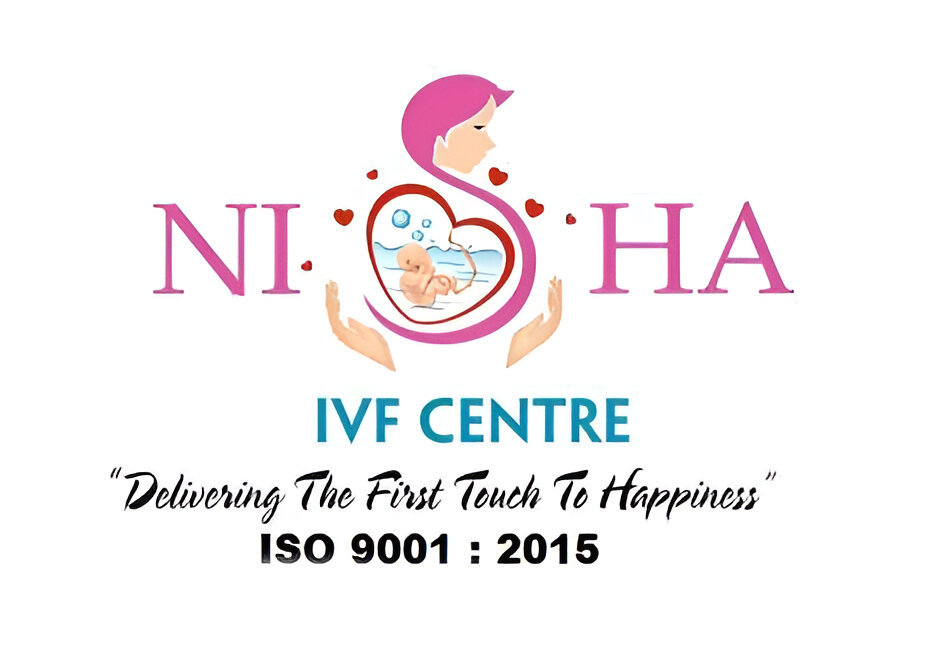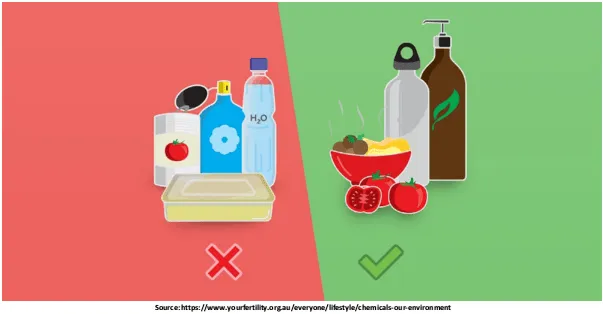Are you planning for a baby? Then, read on this blog to know more about the precautions you can take to avoid the use of harmful chemical products in your house and diet that may impact your fertility.
Often, we unknowingly touch various chemicals through the goods we use, the food we consume, and the air we breathe. At the quantities we are generally exposed to, the majority of these chemicals do not damage us. However, research and other studies have indicated that a collection of common chemicals
known as Endocrine Disrupting Chemicals, or EDCs, can influence the quality of sperm, eggs, and embryos, hence a person’s chances of having a baby. They may also impact the child’s health.
EDCs are present in the environment as well as the food we eat. However, rapid industrialization has resulted in the production and use of thousands of novel chemical compounds since the second world war.Artificial EDCs are present in a variety of everyday objects. BPA, phthalates, and parabens are just a few of the most common EDCs.
Around 95% of people have EDCs in their bodies. But a rising number of studies show that people who have trouble conceiving have higher amounts of particular EDCs. Besides, higher levels of some EDCs can affect conception in couples opting for assisted reproductive technology such as IUI, IVF, or ICSI.
At Nisha IVF Centre, the team of proficient fertility specialists and IVF doctors in Ahmedabad aims to help couples improve their chances of becoming pregnant and having a healthy baby. Hence, you must know what you can do to decrease EDC exposure, especially if you think about having a baby.
The following are the steps to reduce the exposure to EDCs in your daily life:
Avoid Using Foods Containing Chemicals
As we know, washing fruits and vegetables is necessary due to the pesticides that may have been sprayed on them. Because EDCs are frequently found in these sprays, properly washing fresh foods can help you consume less of these toxins.
EDCs can also be present in the coating on the inside of food cans and plastic food packaging. So, it is better to avoid processed or pre-packaged foods wherever possible. Also, examine all food labels to avoid goods that include specific additives, preservatives, or antibacterial agents.
Depending on where these animals were captured or raised, oily fish, such as tuna, salmon, sardines, and fatty meats, may contain high EDCs. As a result, minimizing the amount and frequency with which you consume these types of fish or meat is another way to reduce your EDC intake.
Think About How You Heat Your Food.
EDCs are also found in plastic takeaway boxes, cling wrap, and foil, which is absorbed into foods when heated, mainly if the dish is fatty. So, it is better not to heat or place hot food in these soft plastic containers or wrap them in cling wrap or tin foil. Heat your food in porcelain or glass instead, and cover your dishes with a paper towel or plate.
It is also essential to know that plastic containers advertised as ‘BPA free’ may contain other EDCs such as BPS, which can be just as harmful.
Avoid Using Soft Plastic Bottles
Plastic bottles for drinking water and soft drinks are made with EDC-containing plasticizers. So instead, drink water or soft drinks from glass or hard plastic bottles to reduce your exposure to harmful toxins.
It is also crucial to avoid drinking from disposable water bottles placed in a hot environment. Because the water will absorb higher levels of EDCs from the plastic.
Throw Those Sales Receipts
Many sales receipts have a shiny surface that contains BPA. So, avoid handling receipts, particularly with wet fingers. Also, throw out any old copies in the wallet or at the bottom of the bag.
Keep Air Fresh At Home
EDCs are present in air fresheners, smoke, harsh chemicals, bug sprays, excessively perfumed items, plastic odours, and vapours, as well as particles produced from household furnishings.
The fact is that if you can smell something, you are exposed to it. So, to limit your chances of inhaling chemical particles, the best strategy is to air your home periodically.
Select ‘Green’ Alternatives
EDCs can be present in various home items, including detergents, sanitizers, and cleaning agents. In addition, glues, paints, and varnishes all include these compounds. As a result, if possible, replace harsh household cleaning products with “green” alternatives to reduce exposure to EDCs.
Many supermarkets and stores now sell a large variety of “green” cleaning solutions. Also, consider using ‘green’ gardening items instead of toxic pesticides and herbicides when working in the garden.
Cosmetics and Personal Care Items
EDCs known as parabens can be present in personal care items such as shampoos, conditioners, hair colors, cosmetics, and body washes. Choosing paraben-free items can help you reduce the use of dangerous substances.
Paraben-free products are available in many supermarkets. They have labels denoting “paraben-free” on them. So, consumers don’t have to spend time interpreting the extensive list of ingredients.
Simple modifications, such as the ones listed above, can significantly reduce everyday exposure to EDCs. The initial step toward improving the health and chances of having a baby is to understand where harmful chemicals are present and what you can do to avoid them.



